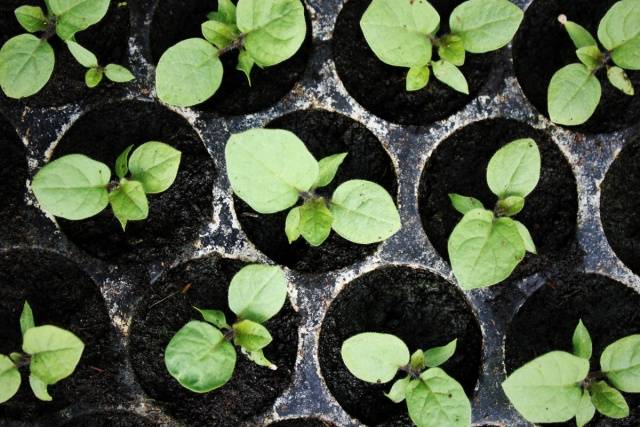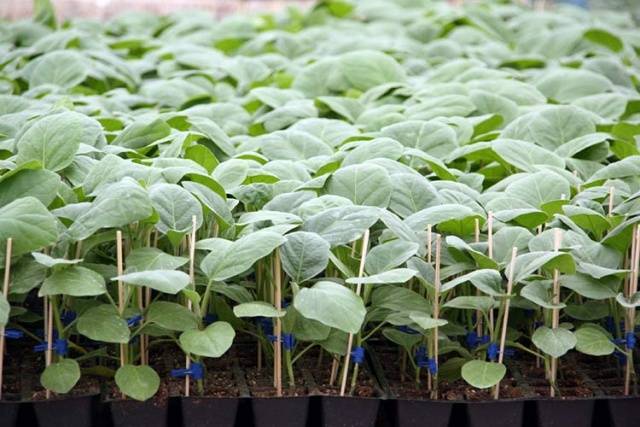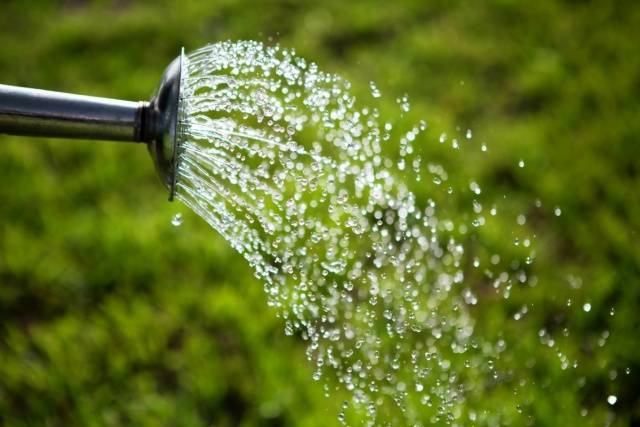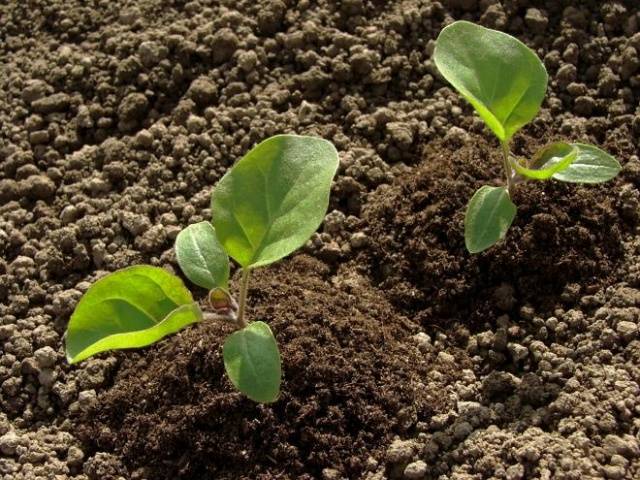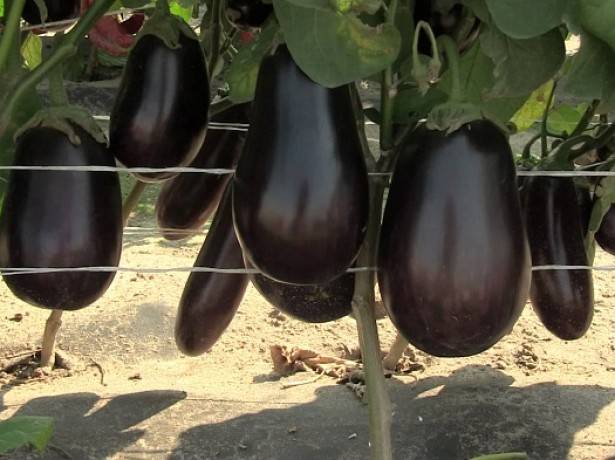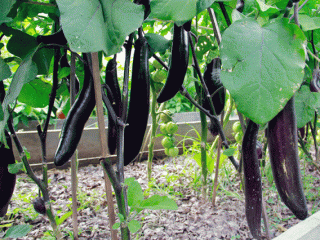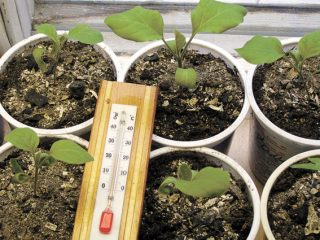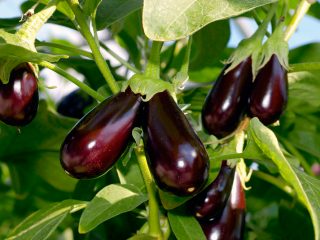Content
Eggplant is an extremely thermophilic culture. It is recommended to grow in Russia only through the seedling method. Eggplant does not tolerate cold snap and even more frost and dies immediately. That is why the cultivation of culture is a complex process, it requires patience and certain knowledge from the summer resident. Let's figure out what is the temperature for eggplant seedlings considered the most acceptable.
Seed preparation and sowing
In addition to temperature, eggplants are demanding on the type of soil and fertilizers. It is believed that if summer residents manage to grow this culture, it means that they have achieved true success in the beds. When purchasing seeds, pay attention to the following parameters:
- ripening period;
- taste qualities;
- disease resistance;
- growing method;
- yield.
The gardener must satisfy all the parameters. If cultivation in a greenhouse is recommended, the variety will not be able to bear fruit at full strength outdoors.
Here are some examples of the ripening times of the most popular varieties of eggplant in Russia:
- grade "Almaz" - up to 150 days;
- variety "Black handsome" - from 110 to 115 days;
- grade "Helios" - up to 120 days;
- hybrid "Bibo" - up to 110 days.
Growing seedlings begins with the preparation of seeds.
It is best to purchase seed from a store you trust. If the seeds are purchased from the hands, they can be held for 2-3 hours in a solution of potassium permanganate.
Sowing soil can be as follows:
- ten parts of quality purchased soil;
- one part of sand (it needs to be warmed up well in the oven);
- one or two parts of compost (you can specialized).
Everything is mixed and the cups are filled with this soil. Some gardeners prefer to grow eggplant seedlings using peat tablets. This is a good way, but you need to choose them so that the diameter matches the seedlings. The pH is also important. For eggplants, both soil and peat should have a slightly acidic or neutral reaction, that is, approximately 6.0-6.7. Also, pay close attention to the moisture content of the peat tablets, it evaporates very quickly, and the eggplant seedlings do not tolerate drought.
Sowing is carried out with dry seeds to the depth indicated on the package. Usually it is 1.5-2 centimeters. Then the seeds are watered, covered with foil or glass. They need to be grown at a certain temperature. Determine in advance the warmest place in your apartment or house. Optimally, if it is + 23-25 degrees Celsius. It can be slightly lower, but this will definitely affect the germination rate. The soil itself warms up well beforehand (up to a temperature of + 26-28 degrees).
Seedling care
Now you can talk directly about growing seedlings. This period is special, since the yield of varieties and hybrids, as well as plant health and endurance, depend on what the seedlings will be.
Eggplant seedlings must be healthy. For this, a number of conditions are fulfilled:
- the temperature of eggplant seedlings should be above 20 degrees, preferably + 23-25;
- watering should be carried out regularly, drying out of the soil is unacceptable;
- if there is little light in your area, the seedlings are illuminated with a lamp, however, the daylight hours should not exceed 12 hours.
Subject to all conditions, you can count on a rich harvest. Temperature, light conditions and watering depend on the fact that eggplant is a natively southern culture. He came to us from distant India thanks to the actively developed trade routes with Europe. The vegetable came to Russia late, but the love of our citizens for eggplant caviar today, perhaps, is transmitted already at the level of genetics.
It's not hard to imagine the climate in India: warmth, humidity, and lots of sunshine. There, this vegetable is found in the wild. Our gardeners, on the other hand, very often faced with the fact that growing seedlings brings more problems than real results. A large percentage of summer residents prefer to buy ready-made seedlings from their hands at the end of May, rather than endure the torment associated with the growing process.
Using seedling trays, sow one variety each. In this case, it will be much more convenient to monitor the seedlings. If everything is quite simple with additional lighting, then the problem glaze and temperature conditions need to be discussed in detail.
Watering
The best water for watering eggplant is rainwater, but who will get it for seedlings? That is why tap water is collected in advance and defended within 24 hours. It should not be cold, the most ideal option is room temperature of the water.
When growing seedlings, eggplant is best used for watering with a spray. It will moisturize soilwithout damaging the root system and without washing the seeds out of the soil.
Temperature regime
It is not enough to follow the recommendations that nature itself gives us. Russia is a country of risky farming. In summer, temperatures during the day can be very different from those at night. This is important, because the seedlings will soon have to find themselves in the harsh conditions of open ground or a greenhouse.
In order for the eggplant seedlings to get used to different temperatures, they adhere to the following regime:
- when the first sprouts appear, film or glass is removed from the plants, during the day to maintain a thermal regime at around + 23-28 degrees Celsius (conditions are different everywhere);
- at night it is recommended to lower the room temperature to + 17-19 degrees.
What will it give? The eggplant root system will be more developed, in addition, the plants will get used to the fact that the temperature during the day and at night is quite different. It is dangerous if the temperature drops below +10 degrees, this is especially noticeable for young immature plants. When growing eggplants outdoors, you need to do everything to keep them warm and comfortable.
A good video about the features of growing eggplant seedlings is presented below:
Transplanting eggplant seedlings into the ground
Let's go directly to the moment of transplanting the finished seedlings into the ground. For a beginner, it will be interesting to know exactly when to transplant, and what needs to be done for this. We will answer both questions. Initially, we note that the predecessors of eggplant can be:
- carrot;
- legumes;
- melons and gourds;
- greens.
You can not grow this crop after tomatoes, peppers, physalis and potatoes. The risk of morbidity is too high.
Depending on the growing season of the selected eggplant variety or hybrid, the seedlings are considered ready for planting after 50-70 days. It should be strong with at least 6 green true leaves.
The soil for eggplant is prepared in advance, since autumn. Not only the predecessors are important, but also the quality of the soil itself. Eggplants love fertile light soils. Use the following tips:
- if the soil is heavy, peat and humus are introduced into it in the fall, sawdust can be added;
- if the soil has an excess of peat, humus should be added to it in the fall;
- for sandy soil, clay, sawdust and peat are used as an additive.
In the spring, it is impossible to bring fresh manure into the soil, it must be rotted so as not to damage the plant.Additionally, fertilizers are applied in the fall:
- urea;
- potassium sulfate;
- superphosphate.
In the spring, the soil is dug up, the acidity is checked, and weeds are removed. All activities are carried out at least a month before the expected planting of eggplant seedlings in the ground. Then the beds are formed with a height of about 30 centimeters.
If the climatic conditions in the region are not stable and a cold snap is possible even in summer, they use the following secrets:
- when growing in open ground, a hole is dug deeper during transplantation and a couple of tablespoons of organic matter are placed in it, then covered with earth;
- when grown in greenhouses and unheated greenhouses, manure barrels are equipped to create additional heat sources.
The organic matter decomposes and provides additional heat for the weak root system of the eggplant.
The scheme for planting a crop in the ground is indicated on the package, but the 40x50 scheme can be used as standard. Eggplants love feeding, especially during the flowering period. Any fertilizer with a high phosphorus content is suitable for this. Fertilization is combined with irrigation. Please note that after planting eggplant seedlings in the ground or greenhouse, the temperature and quality of irrigation water should not change. The water should be settled during the day and warm enough, at least equal to the air temperature. If the water is cold, the eggplant can get sick.
Eggplant care is as follows:
- the earth is gently loosened (so as not to damage the roots, the soil must be constantly loose);
- regular watering (you cannot fill the plants);
- feeding can be done three times per season, this is enough;
- weed control is a must.
The eggplant crop is cut with a sharp knife or pruner so as not to damage the dense shoots. The taste of eggplants will delight every gardener who can independently cope with their cultivation. The most important thing is to observe the temperature regime. The love of this culture for warmth and plenty of sunlight will make the gardener work hard. We hope that our advice will help many to grow a rich eggplant crop.

